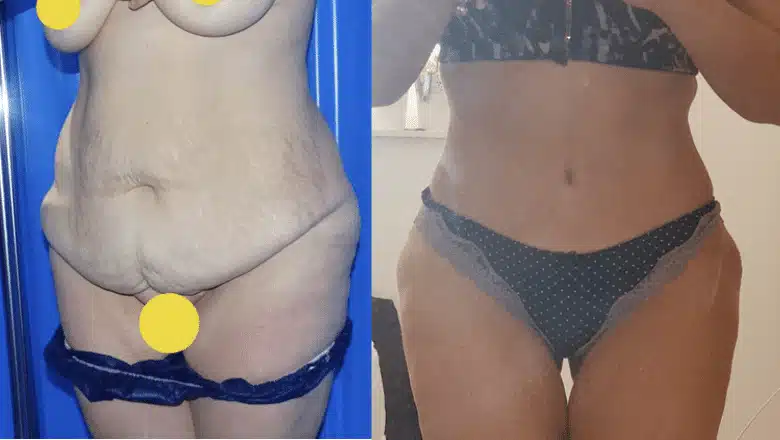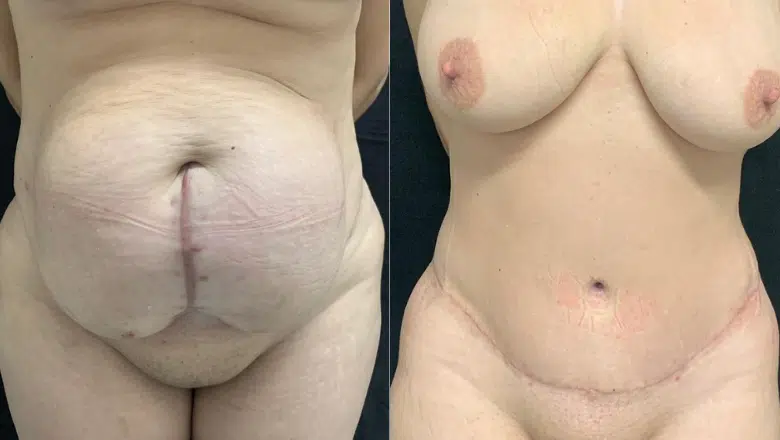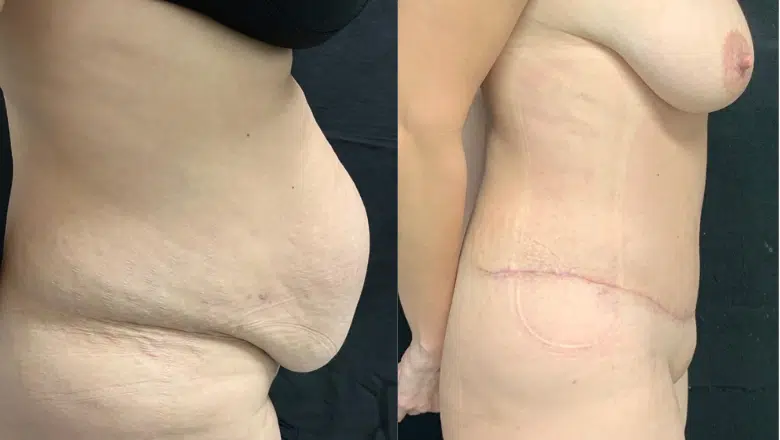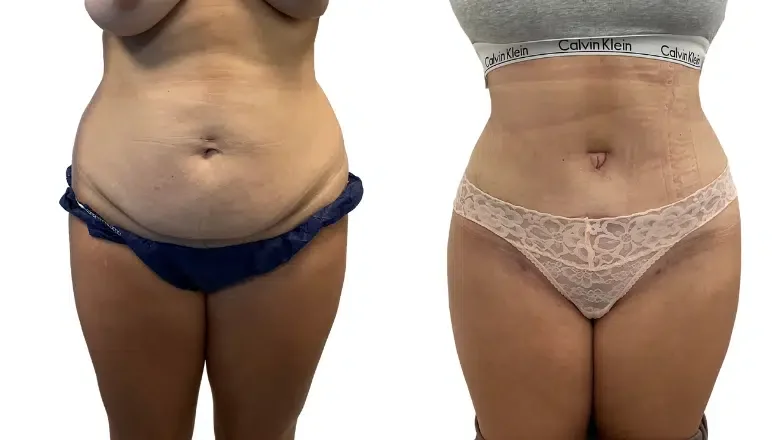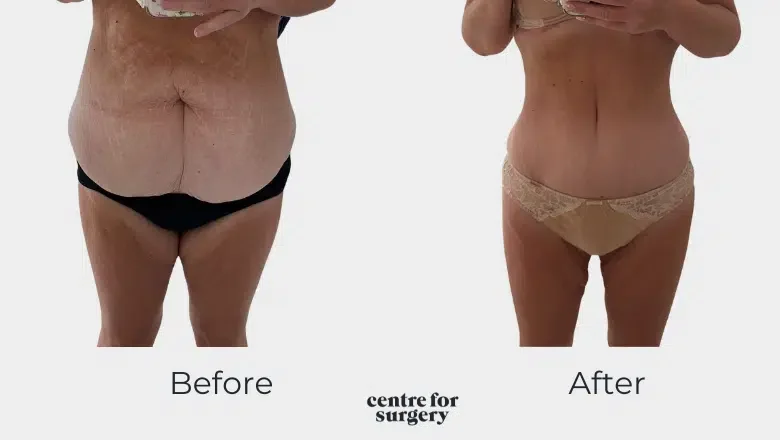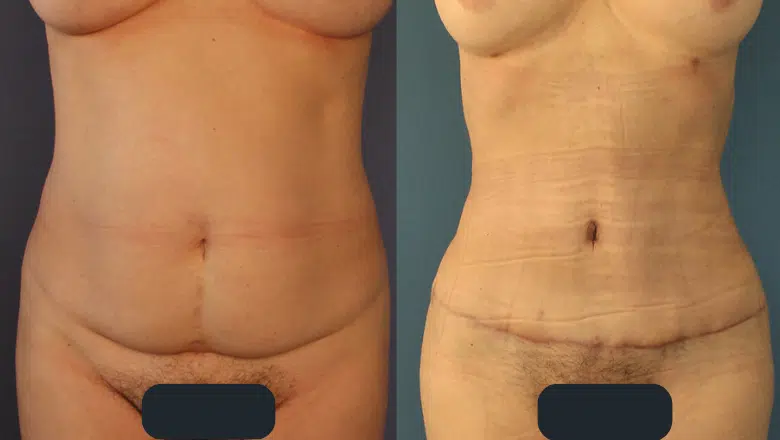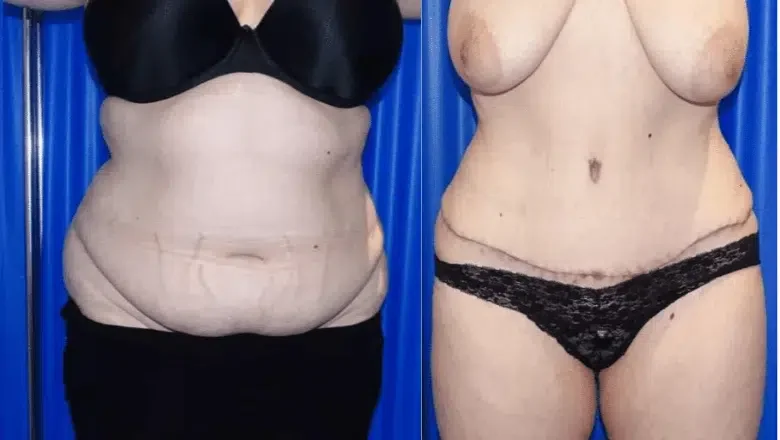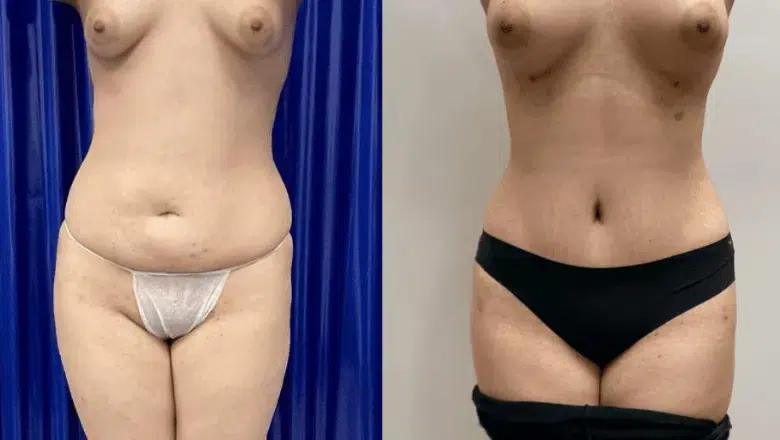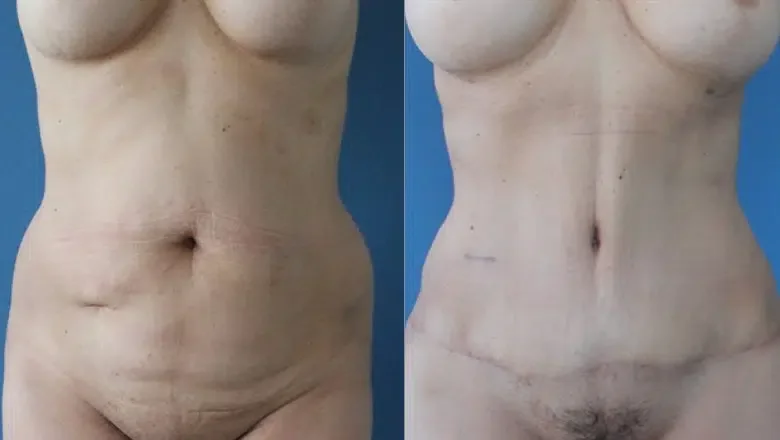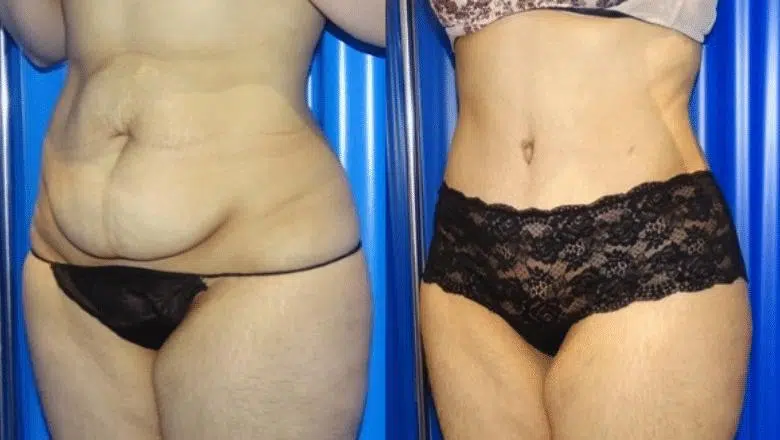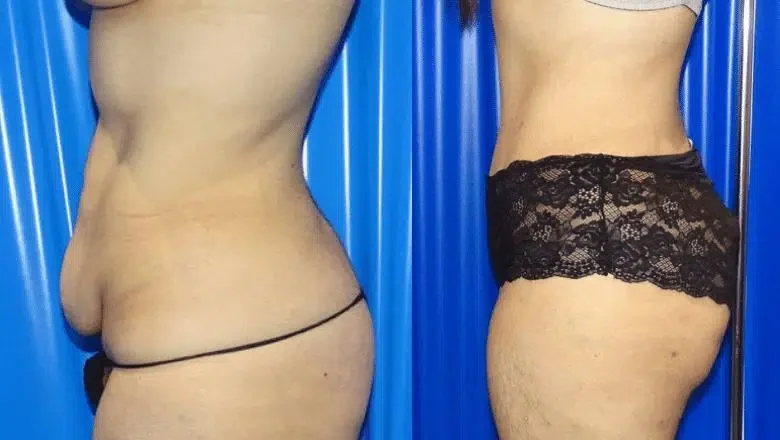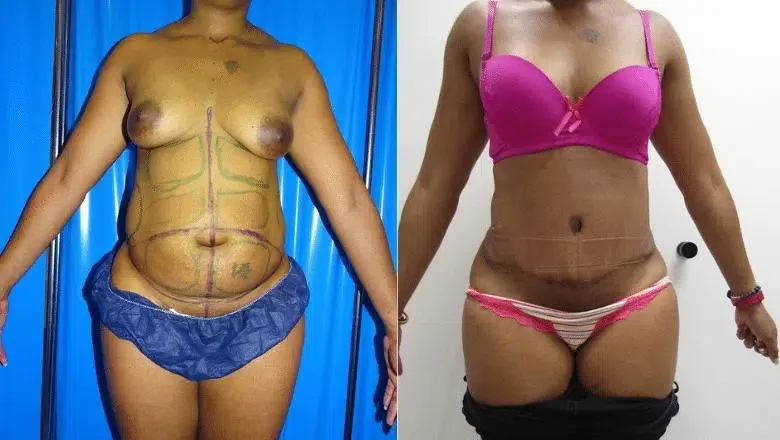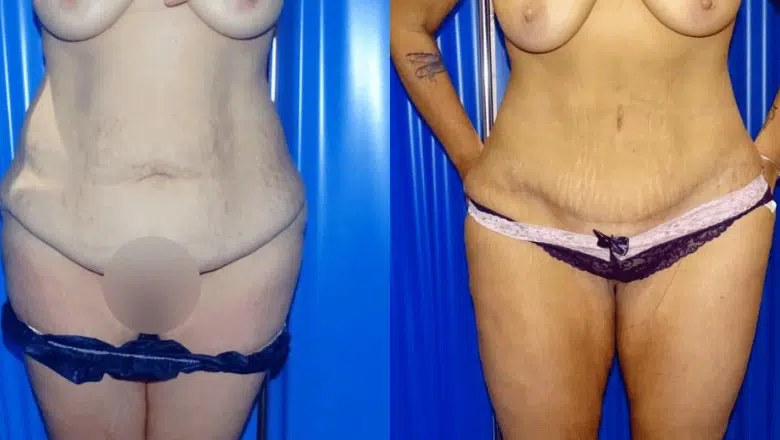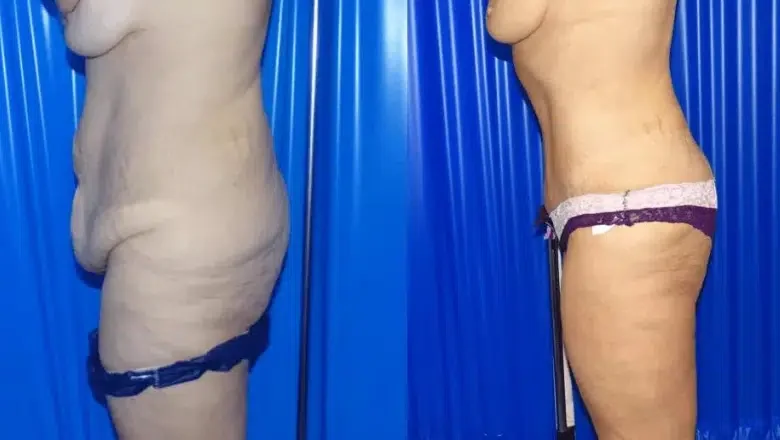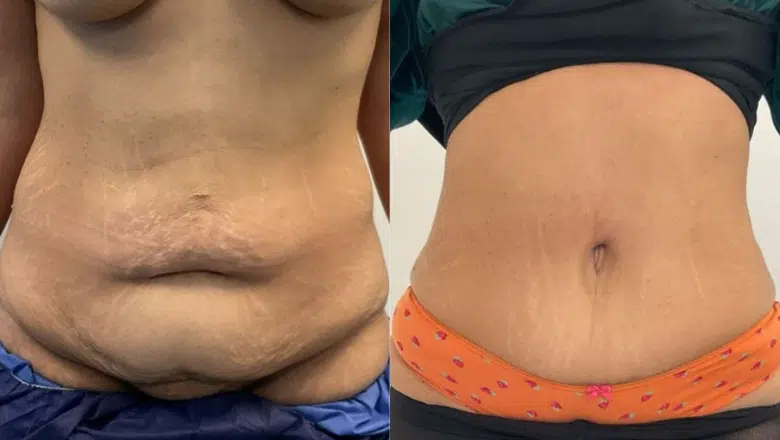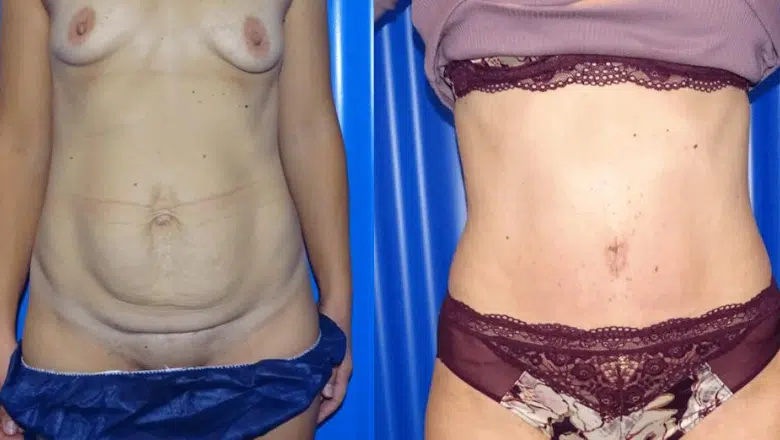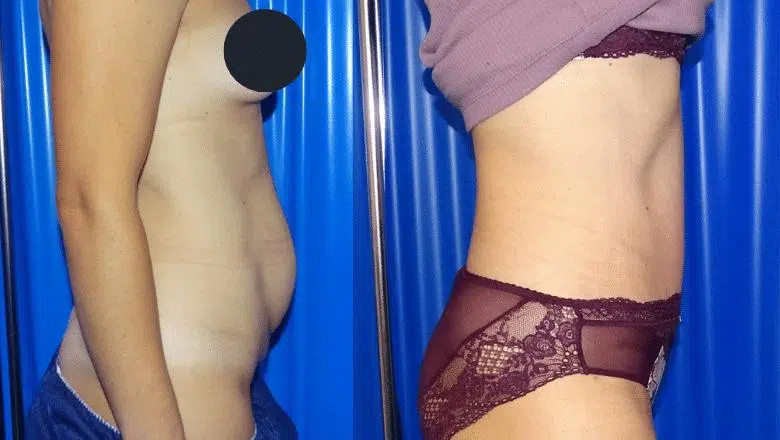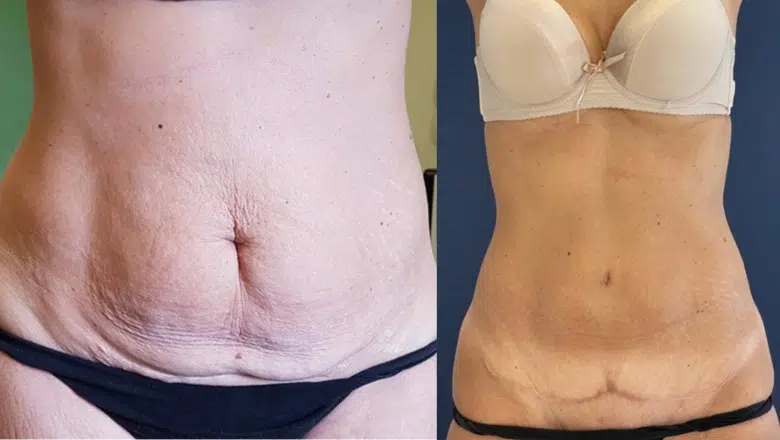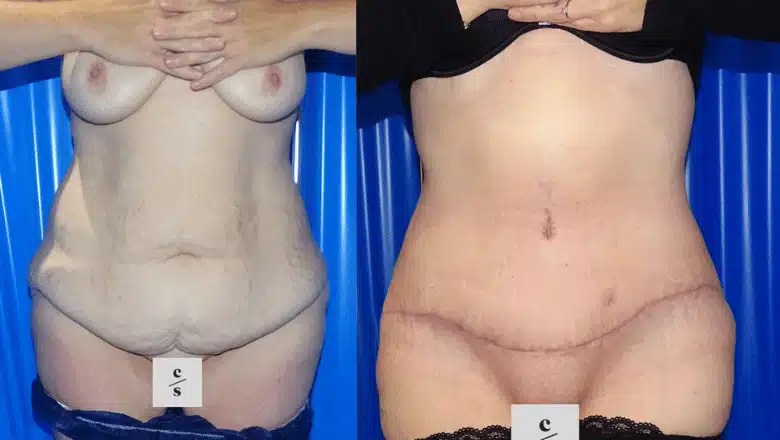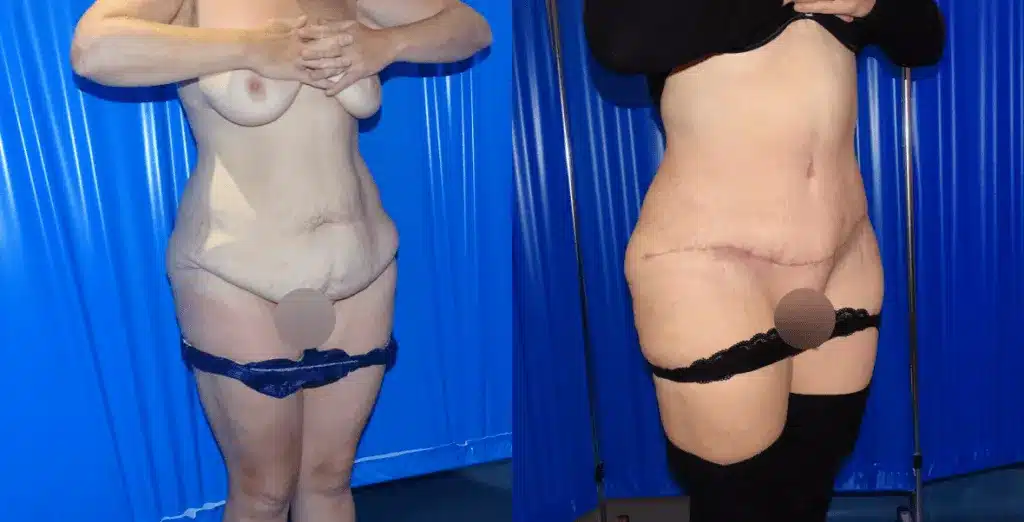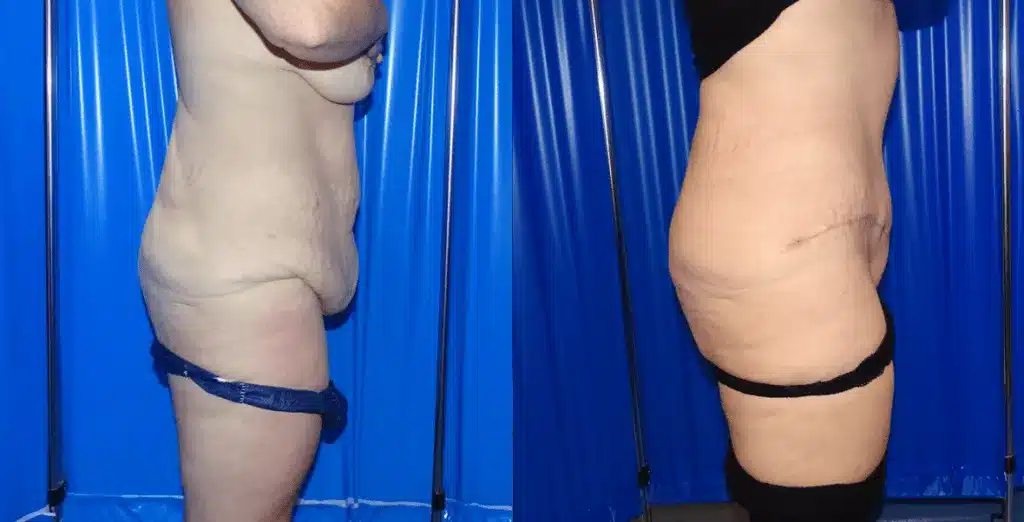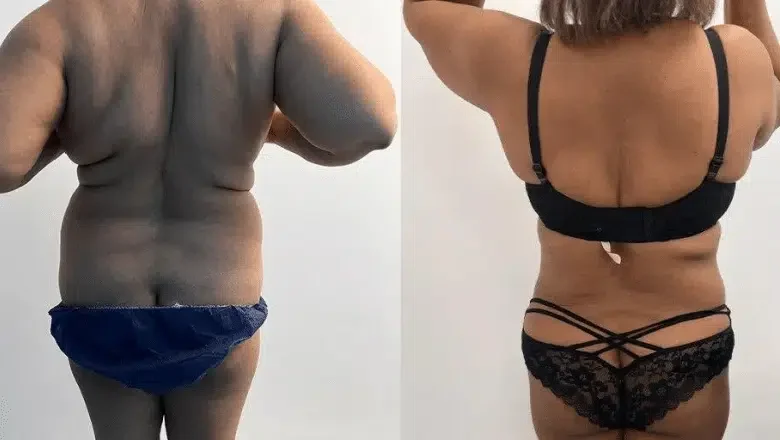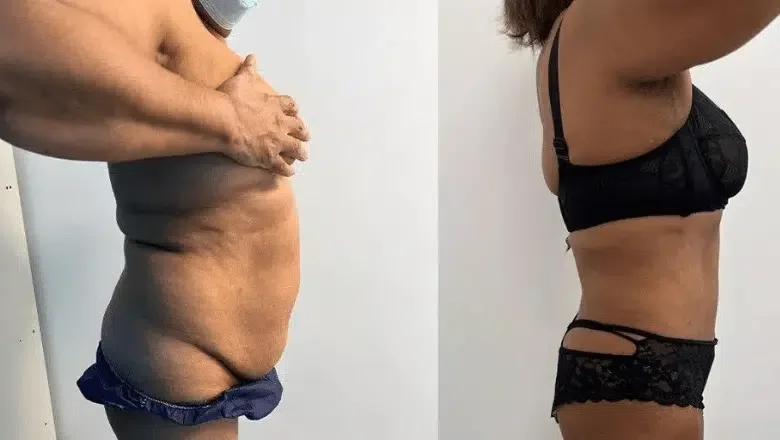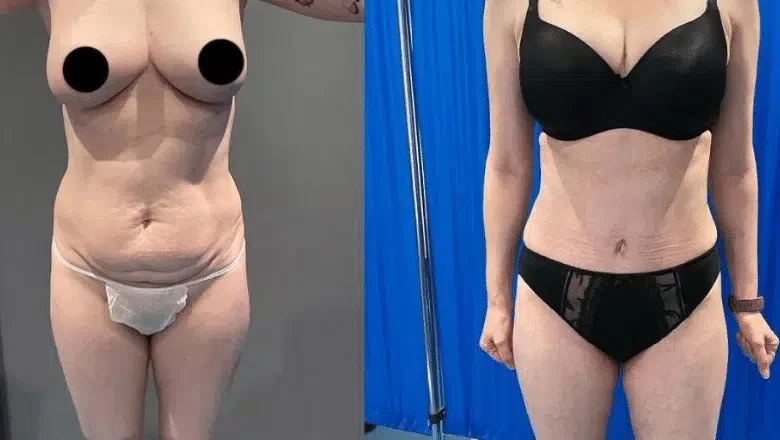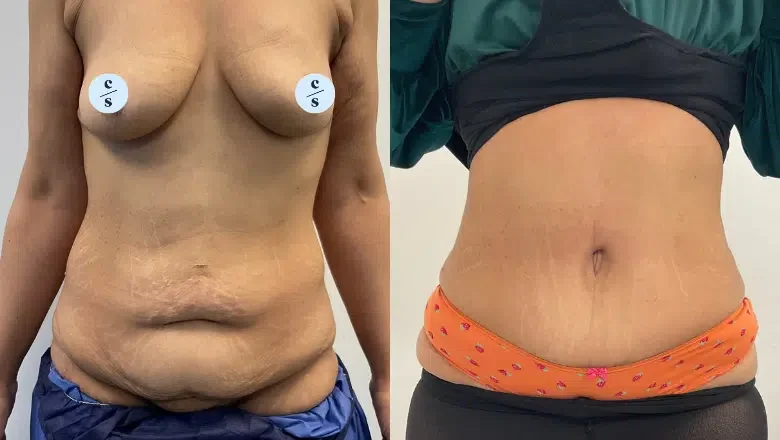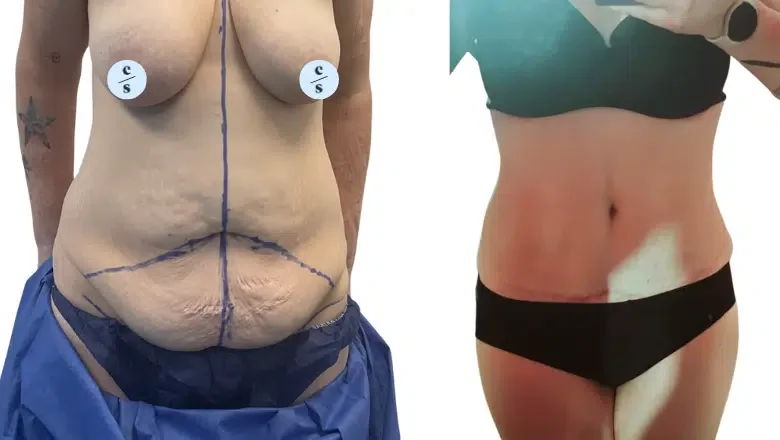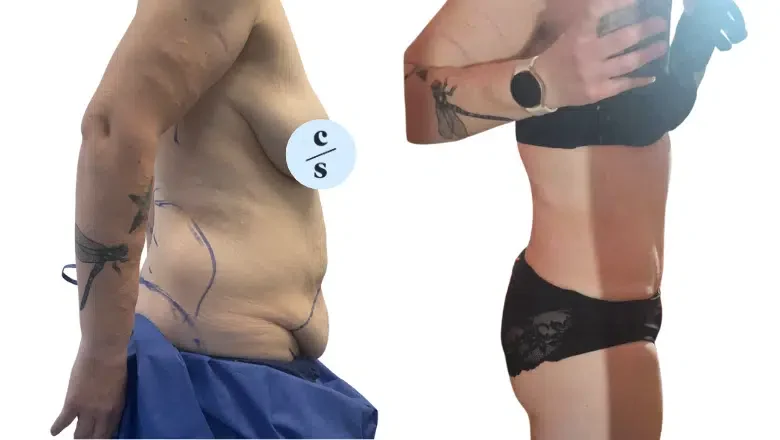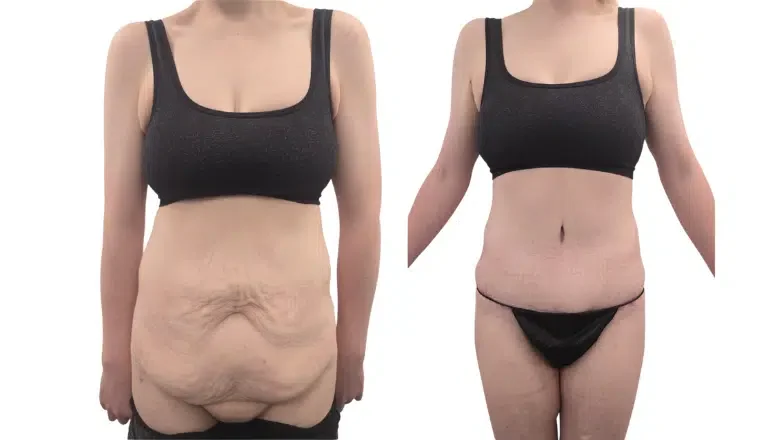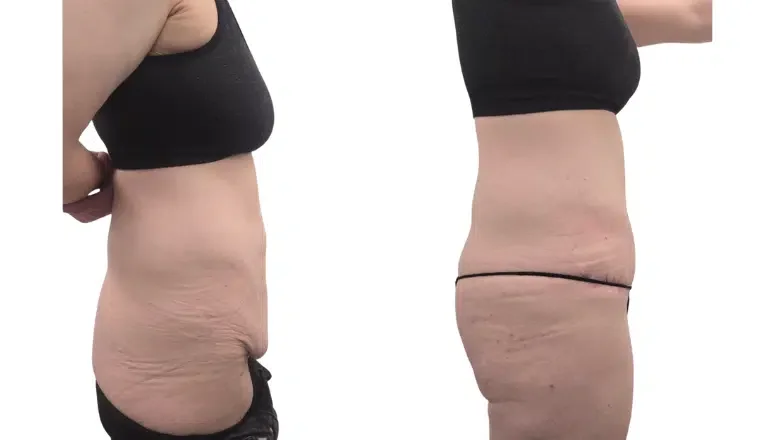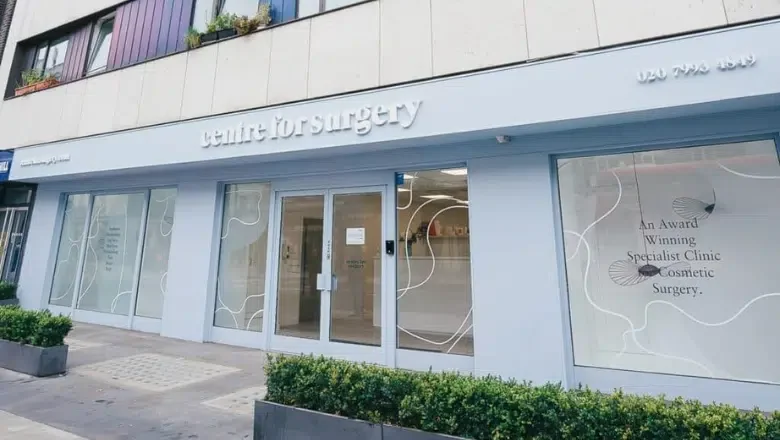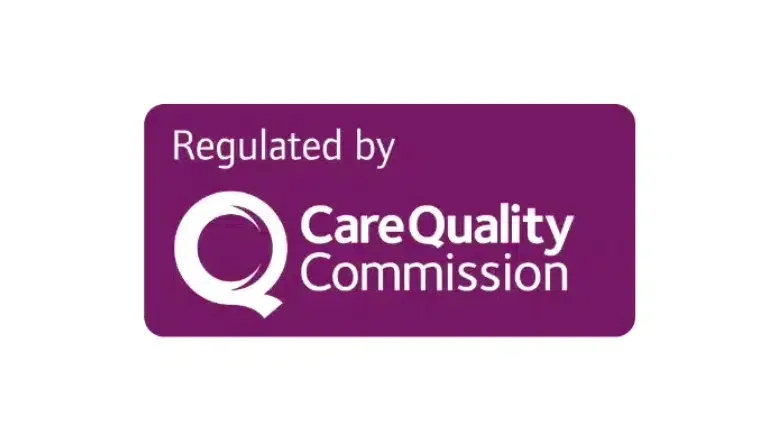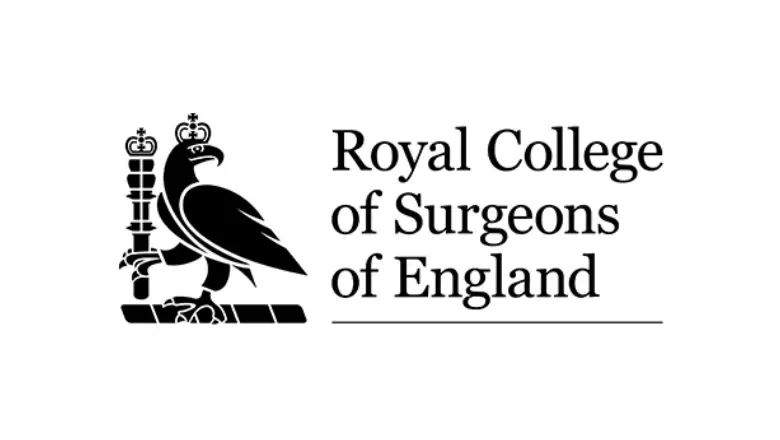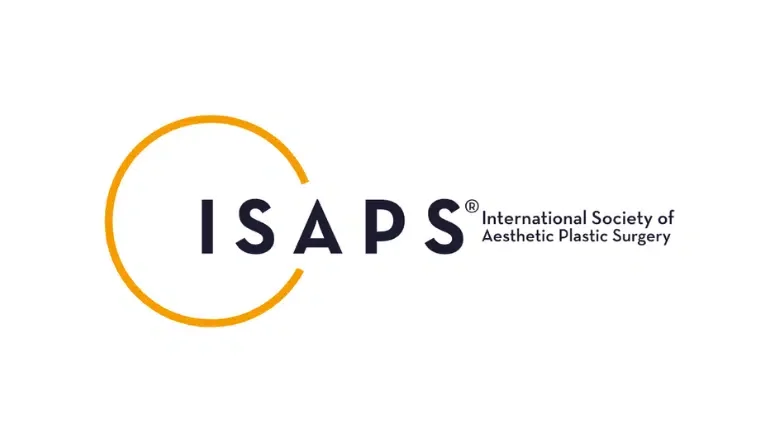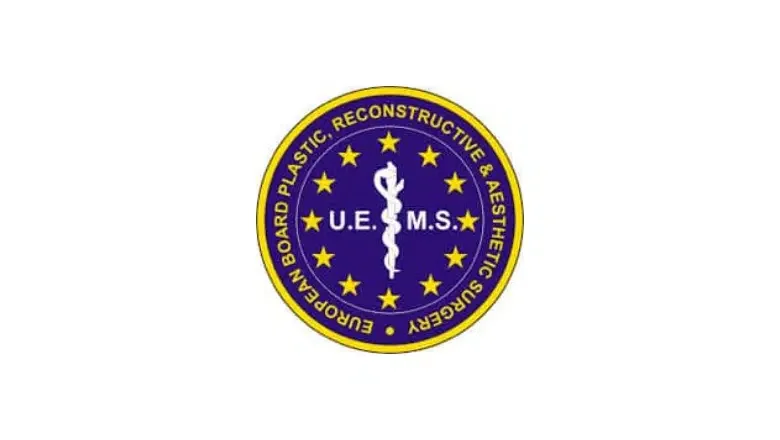Many people explore different ways of achieving a flatter and firmer midsection, and a tummy tuck can be a life-changing procedure in that regard. It is also possible to hear that certain abdominal issues, such as an umbilical hernia, might be addressed during this type of surgery. For those who wonder how a tummy tuck could be combined with the repair of an umbilical hernia, an in-depth look at this medical condition and the surgical process can help clarify the matter. It is useful to explore how umbilical hernias arise, how they can be fixed, what a tummy tuck involves, and why combining the two can sometimes make perfect sense for a patient’s overall health and cosmetic goals.
RELATED: Combining Tummy Tuck and Hernia Repair Surgery
What is an Umbilical Hernia?
An umbilical hernia is a fairly common condition that involves a protrusion of abdominal contents through a weakened section of the abdominal wall near or at the belly button. These hernias frequently occur when a portion of the intestine, or sometimes fat, pushes through a weakened spot in the muscle. In many instances, the hernia appears as a soft bulge around the navel that might come and go, especially when someone coughs or strains, and it may be more noticeable when standing up. Infants can be prone to umbilical hernias at birth, but adults can also develop them later in life. Some people experience discomfort or pain around the hernia, although many notice no symptoms at all apart from the physical bulge.
RELATED: Umbilicoplasty (Belly Button Surgery)
The belly button area is a natural weak spot in the abdomen because it is where the umbilical cord passes through in the womb. After birth, this opening should gradually close. However, if the abdominal muscles fail to seal perfectly, there might still be a slight weakness in that area. Although many umbilical hernias are small, they can become larger over time or cause discomfort, in which case surgery might be necessary to alleviate symptoms and prevent complications
RELATED: How Umbilicoplasty Can Change An Outie To An Innie
Why Umbilical Hernias Occur and Who May Be at Risk
Umbilical hernias can develop in people of different ages and backgrounds, but certain factors might contribute to their onset. A common cause is increased pressure within the abdomen. Persistent straining when using the toilet, carrying heavy loads, or even chronic coughing can place stress on the abdominal tissues. In some individuals, obesity can further weaken the muscular wall, making the belly button area more susceptible to hernias. Women who have been pregnant may also develop umbilical hernias because pregnancy puts strain on the abdominal wall, stretching and thinning the muscles.
For infants, an umbilical hernia might be observed soon after birth. In many cases, it will close on its own as the child grows, but there are times when it fails to close, meaning that surgical repair could become necessary later in life. For adults, a variety of health or lifestyle factors can come into play, including age, repeated pregnancies, or even previous abdominal surgery. When these elements converge, that weak spot near the navel can lead to a noticeable bulge, resulting in a diagnosis of an umbilical hernia.
Identifying the Signs and Potential Complications
One of the simplest ways to recognise an umbilical hernia is by looking for a small bump in or around the navel area. This bulge might become more evident when standing or coughing, and it could disappear or recede when lying down. Many people do not experience any pain with an umbilical hernia, but some do report mild discomfort, pressure, or tenderness, especially when the hernia enlarges or if it becomes irritated by sudden movements.
Umbilical hernias, if left unchecked, can sometimes lead to complications, though many remain stable for long periods. A risk associated with hernias is strangulation, which means that blood supply to the trapped portion of the intestine gets cut off. This can be a serious medical emergency, requiring urgent surgery to prevent tissue damage. Although strangulation is not especially common in the context of small umbilical hernias, it is still something to keep in mind. Larger hernias also stand a greater chance of causing discomfort or pain during daily activities. When any of these concerns arise, medical advice is recommended to evaluate if surgery might be appropriate.
What is a Tummy Tuck?
Tummy tuck surgery, formally referred to as an abdominoplasty, is a cosmetic procedure designed to create a smoother, flatter, and more refined appearance of the abdomen. It typically involves removing surplus skin and fat from the abdominal region, then tightening the underlying muscles to produce a toned look. Many people who choose to undergo a tummy tuck have experienced significant weight fluctuations, pregnancies, or simply age-related changes that have led to sagging skin and weakened abdominal muscles. This surgery can dramatically transform the midsection, reshaping the waistline and creating a more contoured silhouette.
There are different techniques employed during a tummy tuck, and the method used depends on the amount of skin and fat being removed, as well as the patient’s overall anatomy and aesthetic goals. Some tummy tuck procedures involve only a minor incision near the pubic area, while more complex cases might call for a longer incision that stretches from one hip to the other. The surgeon’s main aim is to remove loose skin, tighten the abdominal wall, and reshape the belly button so that it looks natural and proportionate to the new shape.
How an Umbilical Hernia Can Be Repaired During a Tummy Tuck
In some patients who want an abdominoplasty, an umbilical hernia is discovered beforehand, or it might already be known about before the surgery is planned. There are also cases in which the surgeon identifies a small hernia during the actual procedure. When a hernia is detected in a patient undergoing a tummy tuck, the surgeon can often address both concerns in one operation. This dual approach can be beneficial because it allows the surgeon to make use of the same or similar incisions, avoiding the need for separate surgeries and additional recovery time.
If the umbilical hernia is small and reducible, the surgeon will carefully repair the hernia by closing the defect in the abdominal wall, often with sutures or a small mesh support, depending on the hernia’s size and the surgeon’s preference. Once the hernia is repaired, the tummy tuck proceeds as usual, removing or repositioning skin and fat to reshape the midsection. By combining the two procedures, the patient benefits from a repaired hernia and gains the aesthetic improvements of the abdominoplasty, ultimately avoiding the inconvenience of scheduling two separate surgeries and going through two periods of recovery.
Reasons to Consider Combining Repair of Umbilical Hernia with a Tummy Tuck
Combining these procedures can be appealing for several reasons. Firstly, it can be more cost-effective, because fees for operating room time, anaesthesia, and other related expenses can be merged into one surgical session rather than two. Secondly, recovering from a single procedure is often more convenient than enduring two separate recovery periods. Patients can manage post-operative care in one go, which might include using compression garments, taking time off work, and restricting physical activities during healing.
Beyond the financial and practical advantages, another positive factor is the aesthetic outcome. Because the surgeon is already working on the abdominal area, any incisions necessary for the hernia repair can often be integrated seamlessly. This can lead to less scarring compared to a standalone hernia surgery that might leave separate marks. When the tummy tuck is combined with hernia repair, the overall abdominal contour tends to be more harmonious and refined, giving patients both improved health and enhanced appearance in one operation.
Preparing for Surgery and Consultations
For anyone thinking about this combination, a thorough consultation with a suitably qualified plastic surgeon is vital. The surgeon needs to evaluate the extent of the hernia and the degree of abdominal laxity or excess skin to determine if performing both procedures together is feasible and advisable. Some hernias might be too large or complicated to address simultaneously, necessitating more focused treatment or a specific surgical plan. On the other hand, smaller hernias are often straightforward to repair during an abdominoplasty.
It is also important for the surgeon to assess the patient’s overall health. Factors such as body weight, smoking habits, medical history, and future pregnancy plans can all influence surgical decisions. A patient who is significantly overweight might benefit from losing some pounds beforehand, as this can reduce surgical risks and help produce a more optimal aesthetic outcome. Those who smoke may be asked to stop prior to surgery, because smoking can impair healing and increase the risk of complications. By being open and frank about lifestyle habits and medical history, patients can work with their surgeons to create a safe plan that meets both functional and cosmetic needs.
What Happens During the Procedure?
On the day of surgery, the patient is typically placed under general anaesthesia or sedation, depending on the extent of the procedure and the surgeon’s preferences. The surgeon will begin by making an incision across the lower abdomen, usually near the bikini line. Through this opening, the surgeon can gain access to the abdominal tissues, inspect the belly button area, and repair the hernia. If the hernia is present, it might be a noticeable hole or weakened spot in the abdominal wall. The surgeon can gently push any protruding contents back into the abdominal cavity and close the defect with stitches or a small mesh patch if necessary.
RELATED: Tummy Tuck with Muscle Repair
Once the hernia is secured, the plastic surgeon continues with the tummy tuck portion of the procedure. This generally involves removing excess skin, which can occur both above and below the navel area, depending on how extensive the skin laxity is. Liposuction is sometimes used to further refine the shape, especially on the sides of the abdomen or around the waistline. The underlying abdominal muscles may be tightened if they have become stretched or separated over time. When the tightening is complete, the surgeon repositions the skin, ensuring a smooth, taut look, and then creates a new opening for the navel if needed, shaping it so that it appears natural on the flatter abdomen. Finally, the incision is closed, and the area is dressed and bandaged to begin the healing process.
Recovery and Aftercare Following Combined Tummy Tuck and Umbilical Hernia Repair Surgery
Although every patient’s recovery can differ, most people can expect to experience some swelling, discomfort, and bruising in the abdomen for a couple of weeks after surgery. The presence of the hernia repair might add a layer of caution, as the repaired site will need time to mend. Many surgeons supply a compression garment for patients to wear around the torso. This garment can help reduce swelling, provide gentle support for the newly repaired muscles and tissues, and encourage the abdomen to heal in a streamlined contour.
It is crucial to follow your surgeon’s guidelines about activity restrictions in the weeks following the operation. Lifting heavy objects is often discouraged, and intense exercise should be postponed until the abdomen has had adequate time to heal. During the early stages of recovery, walking around at a gentle pace can help promote healthy circulation and reduce the risk of blood clots, so long as it is done in line with medical advice. The majority of patients find that significant swelling subsides within the first month, but it can take several months for all swelling to diminish and for the final results to emerge.
Potential Risks and Considerations
Any surgical procedure carries some degree of risk, and a combined umbilical hernia repair and tummy tuck is no exception. Complications can include infection at the incision site, bleeding, fluid accumulation beneath the skin (known as seroma), or issues with healing. Sometimes a hernia can recur, although careful surgical technique aims to minimise this possibility. After a tummy tuck, changes in sensation around the lower abdomen can happen. Numbness is not unusual, and it may take a while for nerve sensations to normalise, although in some cases it can be permanent.
There is also the consideration that if a patient becomes pregnant again or experiences large weight fluctuations in the future, the repaired hernia and the results of the tummy tuck can be affected. This is why surgeons often recommend waiting until you have completed your family or reached a stable weight before deciding on this operation. Balancing these factors, however, many individuals find that a combined repair offers significant health and aesthetic benefits that make it worthwhile.
Maintaining Results and Long-Term Outcomes
The positive effects of having a tummy tuck and hernia repair at the same time can last for many years if proper care is taken. Maintaining a stable weight and following an exercise routine can help preserve a flatter and more toned abdomen. Though the ageing process will continue naturally, the tightening of the muscles and removal of surplus skin can ensure that the midsection remains firmer than it might otherwise have been. If someone does put on a significant amount of weight or decides to have another baby, it is possible that the abdominal area may stretch again, potentially undermining some of the initial results.
RELATED: How to Get The Best Tummy Tuck – Nine Top Tips
For those who take steps to maintain a relatively healthy and balanced lifestyle, the improvements brought about by the surgery can be long lasting. In addition to the physical benefits, there can be a mental boost that stems from feeling more confident about the body. Clothes might fit better, and many patients find themselves more motivated to preserve a consistent routine of exercise and healthy eating to make the most of their outcome.
Deciding if Combined Surgery is Right for You
Choosing an operation that modifies the body in such a substantial way is a big decision. It is important to weigh the possible benefits of blending umbilical hernia repair with a tummy tuck against the risks associated with surgery and the recovery period. A personal consultation with a skilled surgeon at Centre for Surgery can be incredibly insightful, because they can gauge the nature of your hernia, examine the condition of the abdominal muscles and skin, and discuss whether combining the two approaches is appropriate. They can also help you form realistic expectations about the final appearance of your abdomen.
Patients who choose to have both procedures performed together often appreciate the fact that they only need to go through one round of anaesthesia and a single recovery process. Others might feel more comfortable separating the hernia repair from the cosmetic aspect, especially if there are significant health concerns. Whether or not you ultimately decide to have both done simultaneously, an in-depth assessment of your health, goals, and preferences can help ensure that you make the best choice for your circumstances.
RELATED: Combining Cosmetic Surgery Procedures
Why Choose Centre for Surgery?
Choosing the right clinic for your cosmetic or reconstructive surgery is an important decision that requires careful thought and research. At Centre for Surgery, we pride ourselves on being one of London’s leading specialist clinics for plastic surgery and aesthetic treatments. With our commitment to excellence, patient-centred care, and outstanding surgical outcomes, we strive to provide every individual with a safe, supportive, and highly professional experience. Here’s what makes Centre for Surgery stand out as a trusted provider in the field of cosmetic surgery.
Expertise and Innovation
Our team of highly qualified and experienced surgeons is dedicated to delivering exceptional results tailored to each patient’s unique needs and goals. With an emphasis on using the latest surgical techniques and technologies, Centre for Surgery ensures that our patients benefit from minimally invasive methods, quicker recovery times, and enhanced safety. Our clinic specialises in procedures ranging from tummy tucks and breast reductions to rhinoplasty and facelifts, offering bespoke solutions to help you look and feel your best.
We also set ourselves apart by using Total Intravenous Anaesthesia (TIVA), a modern and safer alternative to traditional anaesthesia methods. TIVA promotes a smoother recovery process with fewer side effects, ensuring you feel more comfortable during and after your procedure.
A Patient-First Philosophy
At Centre for Surgery, we understand that every journey to self-improvement is deeply personal. From your initial consultation to post-operative care, we prioritise your comfort, confidence, and satisfaction. Our approach is rooted in open communication, transparency, and a genuine commitment to helping you make informed decisions. Whether you’re exploring your options for an umbilical hernia repair, considering a tummy tuck, or seeking another transformative procedure, our team is here to support you every step of the way.
Real Patient Experiences
Nothing speaks louder than the experiences of those who have walked through our doors and achieved their goals. Here are just a few testimonials from our patients:
- “From start to finish, my experience at Centre for Surgery was exceptional. The team was incredibly knowledgeable and answered all my questions with care and patience. My tummy tuck results have exceeded my expectations, and I feel so much more confident in my body.” – Sarah M.
- “I cannot thank the surgeons and staff at Centre for Surgery enough. They repaired my umbilical hernia during my tummy tuck, and the results are flawless. The level of expertise and professionalism was evident throughout the entire process.” – Rachel H.
- “After struggling with discomfort caused by an umbilical hernia for years, I finally decided to have it repaired alongside a tummy tuck. The Centre for Surgery team made me feel completely at ease, and the results have been life-changing. I highly recommend them.” – Amanda T.
Convenient Location and Facilities
Located at 95-97 Baker Street, London W1U 6RN, our clinic is easily accessible and equipped with state-of-the-art facilities designed to ensure your comfort and safety. Whether you’re visiting us for a consultation, surgery, or follow-up appointment, you can expect a welcoming environment where your needs are our top priority.
Flexible Finance Options
We understand that undergoing cosmetic surgery is a significant investment, which is why we offer flexible financing options, including 0% APR with Chrysalis Finance. This allows you to spread the cost of your procedure over manageable monthly payments, making your desired surgery more affordable without compromising on quality or safety.
For more details about our financing options, visit: Finance Options.
Learn More Through Our Resources
We believe that education is a vital part of the decision-making process. To help you make informed choices, we offer a wealth of resources on our website:
- About Us: Learn more about why Centre for Surgery is the right choice for you. Visit: About Us.
- Meet the Team: Get to know our highly skilled surgeons and medical professionals. Visit: Meet the Team.
- Plastic Surgery Blog: Stay updated with the latest insights, tips, and information about plastic surgery. Visit: Plastic Surgery Blog.
- Clinic FAQs: Have questions? Find answers to the most common queries about our procedures and policies. Visit: Clinic FAQs.
Book Your Consultation Today
Ready to take the next step in achieving your goals? Contact Centre for Surgery today to schedule your consultation with one of our expert surgeons. Our friendly team is here to guide you through the process, answer your questions, and help you make the best decision for your needs.
- Phone: 0207 993 4849
- Email: contact@centreforsurgery.com
Whether you’re considering an umbilical hernia repair, a tummy tuck, or any other surgical or non-surgical procedure, Centre for Surgery is here to provide the exceptional care and expertise you deserve.

